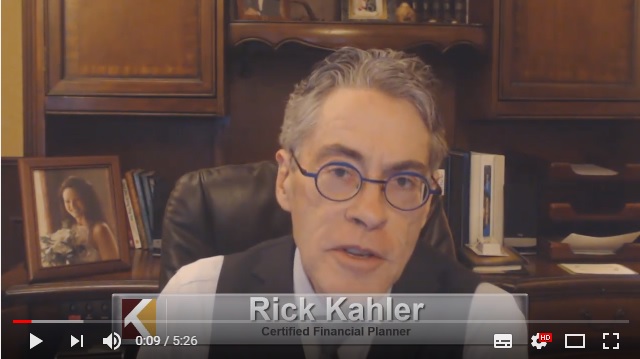The following blog is by Rick Kahler originally published in Rick Kahler’s Blog – Financial Awakenings.
When should you abandon a sinking financial ship? Not merely because it’s being tossed by stormy seas.
I was reminded of this at a recent gathering of financial advisors. One participant noted that five years ago he would have never disclosed he was a market timer. Such a revelation would have been greeted with disdain. Today, he said, the reverse is true. Market timing—often called “tactical asset allocation” to give it a little more panache—is back in vogue. Today it is the advisors who subscribe to “buy and hold” that are keeping silent.
Why the big turnaround in just five years? Market timing (trying to sell at the top or buy at the bottom of a market) is 180 degrees from buy and hold (buying a number of asset classes and maintaining them). One might understand such a rapid shift in non-professionals untrained in the area of finance, but most advisors are trained professionals.
To understand what happened, we need to look no further than the market crash of 2008-2009 and the mechanics of the brain.
Market timing suggests one can follow indicators that predict when a market is low and when it is high. The defining motto of timing is “buy low, sell high.” Market timers are very happy if they can capture 65% of a market move.
Conversely, the buy and hold theory suggests that, while technical indicators can suggest when a market is low or high, that market can go even lower or higher because markets are driven by investor emotions. Buy and hold advisors select a target percentage for each asset class and then rebalance the portfolio periodically to hold to those targets.
Inherent in a buy and hold strategy is the fact that when markets go lower you do nothing. You stand by and watch that portion of your portfolio do a deep dive. This is an incredibly difficult thing for the human brain to do, whether that brain belongs to an advisor or a client. When fear triggers the emotional section of our brains, most of us want to immediately “do something” to ease the anxiety.
The most obvious action to take when markets fall is to abandon ship and sell. This is what many well-meaning but terrified advisors did five years ago when we were at the bottom of the worst market crash in modern history. Some buy and hold advisors concluded their strategy had failed them, bailed out of the markets, and decided market timing was the new Holy Grail.
Yet the assertion that a buy and hold strategy failed is not supported by results. The only portfolios I’ve seen that that failed were those where the investors sold equities when they were at or near the bottom of their deep dive. Most advisors and investors who had diversified portfolios and stayed the course with periodic rebalancing had returns significantly higher than investing in a savings account or certificate of deposit.
I am not saying that all market timing doesn’t work. While market research suggests only 3% of equity managers can beat the markets over a 20-year period, there are some successful long-term investment strategies that inherently employ market timing.
Whether an advisor is a market timer, buy and hold, or uses a combination of both strategies isn’t my point. The real issue is to choose your investment philosophy carefully and then stick with it in the face of scary downturns. Think of your investing ship as a submarine. Don’t abandon it when it’s at the bottom of the ocean. Give it a chance to take you safely back to the surface.
About the author: Rick Kahler, Certified Financial Planner™, MS, ChFC, CCIM, is president & founder of Kahler Financial Group and co-founder of the Healing Money Issues Workshop. To know more about him, visit his blog: http://www.financialawakenings.com/







0 Comments